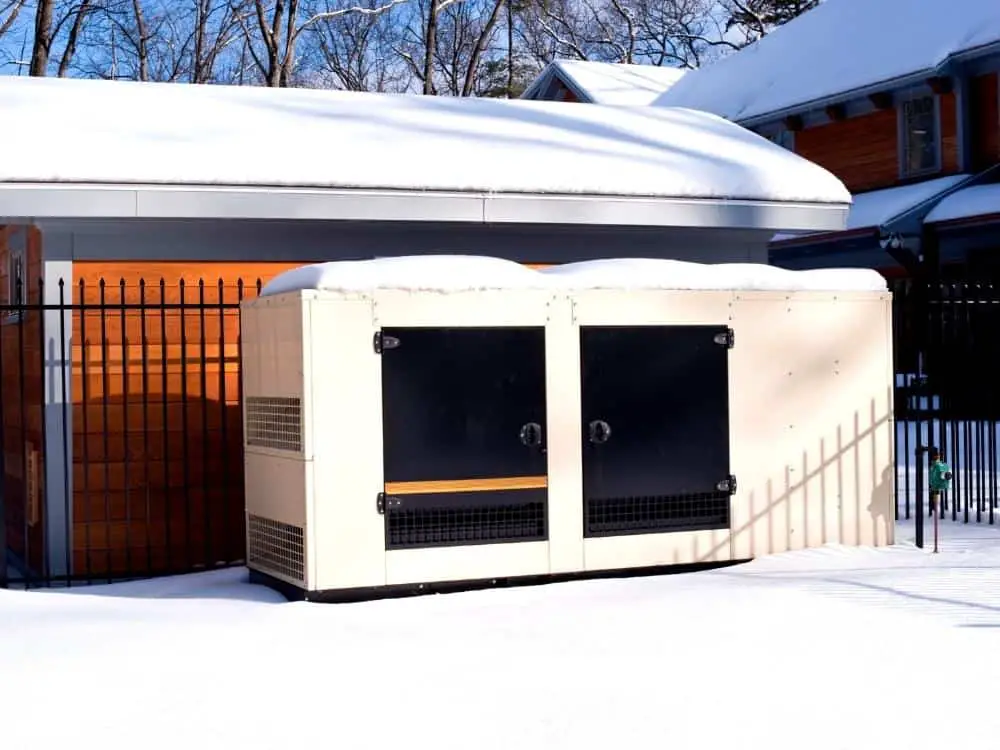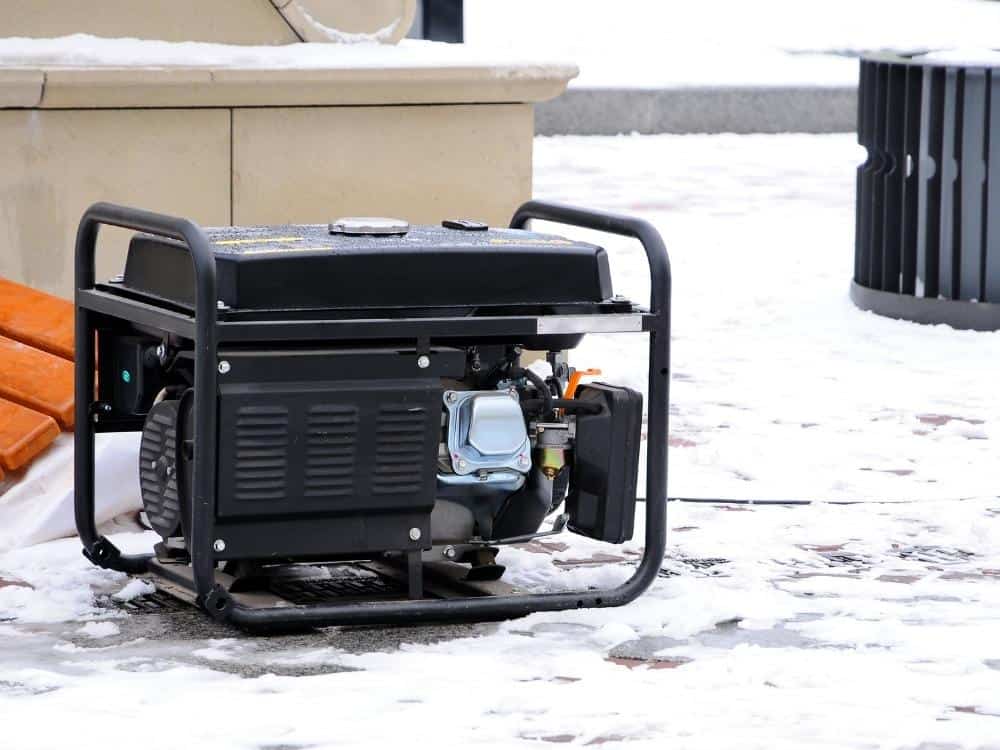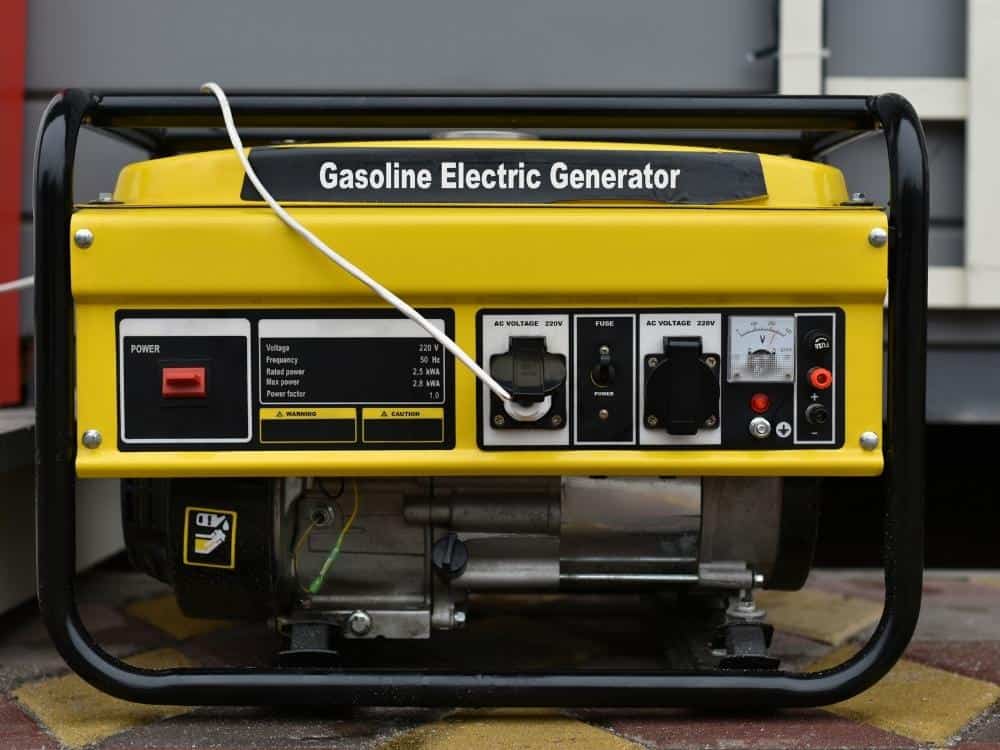If you are looking for a generator for your home or business, there are a few aspects you need to know about both your power requirements and the generator itself, and looking at the plates on the machine; the ratings may be a bit confusing.
Generators are rated in kVa or kilo-volt-amps, which measure the generator’s apparent power, including the power factor or pf, which measures energy transfer efficiency from the generator to the load. There is also the kW or kilowatt rating, which measures the real power of the motor.
The key ratings will be looking to understand here are
- kVa vs. kW explained
- What is the power factor, and how does it affect the rating
- Standby, Prime, and Continuous Power
- Can You Convert A 60hz Output To 50hz
- How to size a generator for your needs
Understanding the generator ratings will make it easier for you to select the best one for your needs, so let’s crank it up and get going!

What Are The kVa & kW Ratings And What Do They Mean
Both kVa and kW are power ratings of the generator. Still, they are calculated from different aspects, with kilowatts rating the motor powering the generator known as ‘real power.’ At the same time, kVa is a power rating that includes the power factor, which is the ‘apparent power.’
This may seem a little vague, but all will become clear as we look at the ratings in a bit more detail. Let’s start with the one rating most people are familiar with: the kW or kilowatt rating.
What Are Kilowatts (kW)?
A kilowatt is one thousand watts and is a measure of power the motor or other electrical appliances can generate at the rated voltage and current.
As you may know (or not), electrical power is measured in watts or watts X 1000 kilowatts. Watts are calculated by multiplying voltage measured in volts (V) and current (A) measured in Amps to give you the power in watts.
Kilowatts are used for measuring power in motors, and this is why your car’s power is measured in kilowatts, as this is the real power that the motor can generate at a specified RPM.
In generators, the same applies, so you may find your generator set (genset) has several ratings, including the kilowatt rating. This will tell you the power that the engine driving the generator can produce.
To calculate the kW on your generator, divide your kVA by 0.8. If the kVA is 1000, the kW would be 1,25 kW or 1250 W.
Why Are Smaller Portable Generators Marketed In kW?
The kW rating is easier for consumers to work with, and it’s also simpler as you don’t need to consider the power factor calculation so that you would see portable generators advertised with the kW rating and not a kVA rating.
While both large and portable gensets are rated in kVA, the smaller portable ones are often listed in kW as this gives you the maximum power output of the generator, so you can see what devices you can power from it.

What Is kVa And Why Are Generators Rated This Way?
The kVa rating is a more accurate rating of power as it includes the effect of the power factor. Power factor influences how well the energy from the generator is transferred to the devices it is powering.
Since generator manufacturers don’t know what type of appliances will be connected or the power loads and ratings they have, they assume a power factor of 0.8 as a standard, giving the generator the kVA rating.
The kVA rating is calculated by multiplying the kW by the Power Factor (PF), so if we take a generator with a kW rating of 1kW or 1000W, the kVA will be 0.8kVA.
What Is The Power Factor And Why Is It Important?
The power factor measures how efficiently the generator can transfer electrical energy to the devices it is powering and is a critical element in assessing generator performance.
Because no electrical circuit is 100% free from resistance as the current passes through it, there is a loss of efficiency, and so this has to be considered when rating generators. Ideally, the power factor should be 1, and if that were the case, the kW would equal kVA.
In industrial applications, engineers are brought in to assess and look for ways to improve the electrical efficiency in operations. The power factor is one of the main measurements they look at.
As the power factor increases, the more efficiently the electrical supply is utilized, the less electricity is used in the operational process. This saves the business money and reduces breakdowns and maintenance as efficient usage means the electrical machinery operates with less stress.
If generators had a lower PF of, say 0.6, it would need a generator with a higher kW to deliver the same power load consistently as one rated at 0.8. Using the same calculation above, if the generator were rated at 1000 kVA, the kW needed would be 1,67kW, and that is a lot more power required due to the lower efficiency.
Now, let’s look at some of the other terms used in rating generators.
What Is The Standby Power Rating On A Generator?
The standby power is the maximum possible output that the generator can deliver for short periods only. Standby generators or emergency generators are utilized when the main power supply – usually from the utility fails – and power is needed to keep the facility running for a few hours until the main power supply is restored.
- Most manufacturers recommend that standby generators be utilized only for 200 and 500 hours per year as a maximum. Plus, it is only recommended to run at 70%-85% of the manufacturer-designated nameplate rating across varying loads.
You would find these types of gensets in hotels, hospitals, and large companies that need to maintain power even when the utility is down – just think Nakatomi Plaza in ‘Die Hard’, and you’ll have the idea!
These systems often undergo regular testing and maintenance to ensure that they kick in when needed.
They are often required to maintain essential electrical equipment in medical, military, or civilian installations.
What Is The Prime Power Rating?
The prime power Genset is used for continuous power supply where the facility does not have access to the main utility grid and relies on the generator as its sole power source.
This sounds a bit ‘Transformer-ish,’ but it is exactly what it says. Isolated installations with no existing electrical infrastructure like some military or research stations often use prime power generators.
Like continuous power, they are designed to run for unlimited hours. Still, these gensets have the capacity to handle a 10% overload for a limited time per day, often about 1 hour in every 12-hour cycle.
Like the continuous power systems, the prime power gensets deliver less than standby systems but have greater operational load scope and duration.
What Is The Continuous Power Rating?
The continuous power rating is found on gensets used to deliver lasting power where the facility operates parallel to the utility grid and is used for base loading applications
One of the main differences between standby and continuous gensets is the hours they can operate, and with a continuous set, they have no limit on their operational time. Essentially as long as they have fuel, they will generate power.
Running for unlimited hours, these generators will consistently deliver 100% of their continuous rated power and often work with the power utility or other co-generation systems.
Continuous power systems are generally the lowest-rated outputs on the genset, so as an example, the following genset ratings could apply for a 1000 kVA generator:
- Prime Power: 1000 kVA
- Standby Power: 1100 kVA
- Continuous Power: 910 kVA
These ratings would apply to a generator with the same engine and alternator, and you can see the differences between the ratings.

Converting A Generator From 60hz To 50hz
Most electrical appliances run on either 50hz or 60hz frequency, and if you have those that run on 50hz but your generator is rated 60hz, would you be able to convert it?
Before we get into that, let’s understand what all this means. Electrical appliances not only run on power but frequency as well. So, 1hz means one complete wave cycle or sequence per second.
At 60hz, that means that the power completes 60 complete wave sequences per second, and at 50hz, it completes 50 sequences per second.
This is important as not all devices run at the same frequency, so there are instances when the 50hz frequency is required. Fortunately, the frequency setting is often a question of adjusting the engine’s RPMs.
For 60hz frequency, the engine would typically run at 1800 RPM, and for 50 Hz, the engine would run at 1500 RPM.
In some instances, additional parts or components may be needed to do this, and should that be the case, that is best left to qualified generator technicians to assess, advise and implement.
A good way to avoid this issue is to properly assess your power needs and device specifications before choosing a generator or discuss this with the service provider.
The correct frequency is set before the generator is used.
How Do You Choose The Right Sized Generator?
To do this properly, especially if you are looking for a standby system for your home or business, you need to know both the running and startup wattages of all the appliances you want to connect to the generator. For industrial applications, that process is a little more complex.
How To Find The Right Size Generator For Your Home
Calculating the total wattage needed for your home is a question of adding up the wattages on the various appliances and devices you will need to run if the utility power should fail.
As with most things, there is a catch. Any appliance with a motor like a fridge or air conditioner has a more startup power requirement than its rated power. When calculating your power load, make sure you use the startup power rating as well, or your calculations will be off.
You can strain the generator when that happens, and it may not work properly. The worst-case scenario is that you could damage your appliances, so make sure you factor in the startup power requirements.
Generally, the startup power rating is between 1,5x and 3x the rated power, so a 1000W air conditioner could use between 1500W and 3000W on startup and then settle to the rated 1000W for normal operation.
To do this, make a list of all the devices and appliances you’d want to keep on during a power failure, add up their rated and startup wattages, and that will give you the size of the generator you’d need.
As a precaution, though, size up your generator by about 10% to 20%, so you have some extra gas in the tank in case you need it – and ALWAYS install a transfer switch if you are connecting the generator to your home electrical system!
Most appliances do have the startup power rating on the tag, but if not, you can usually find it in the manual or on the manufacturer’s website.
Sizing Generators For Industrial Applications
The same principle would apply to more industrial applications, but the process involved in establishing variable loads and power factors is far more detailed and technical.
For an industrial application, specially qualified technicians would connect various devices that accurately measure the facility’s load profile over a specified period.
The profile would include peak demand and usage times and low demand periods to provide a complete load profile of the facility and then match those demands with the proper genset.
There may also be additional power factor correction systems that may need to be installed to improve the facility’s efficiency and reduce operational costs for the generator.
Conclusion
Understanding how generators are rated is important whether you are looking for a domestic, portable, standby, prime, or continuous genset to power your home, business, or secret underground military bunker in your backyard!
And now that you know what they all mean, you can sally forth with confidence and be sure that you will get the right capacity genset for whatever application or facility you need.
Resources




